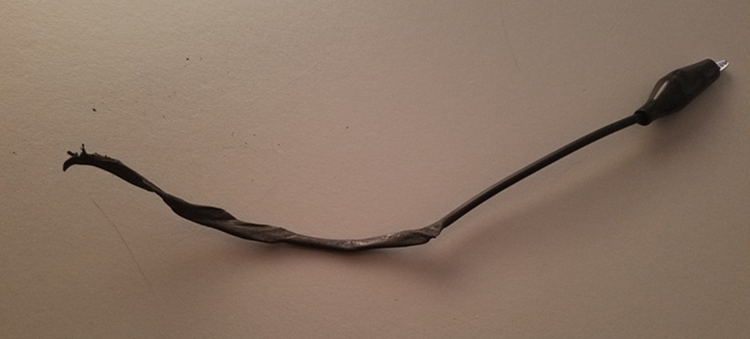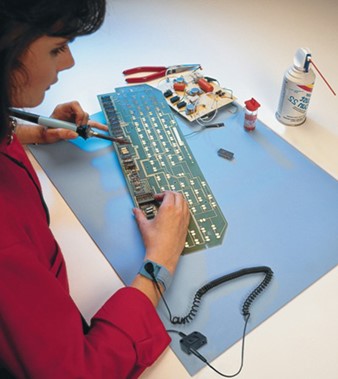I Frankensteined a solution so I wouldn’t generate a static charge from my chair. Eventually, I got burned—well, I didn’t, but my workaround did.
I sit on a high draftsman chair with a coarse woven fabric seat. When I slide off it, I’d often generate a static charge, which I would release as soon as I touched something that had a ground path. It was shockingly annoying, especially to whoever I might touch—the cats especially hate it.
To solve the problem, I wrapped some bare wire around the center shaft of the chair and connected a clip to it and then a little loop of a stand of 0.31-inch solder, which lies on the floor and would slide around as the chair was moved. It worked, and people and cats stopped avoiding me. And then it stopped working. A couple of days later, I found a severely burnt wire on my desk that the cleaning people found on the floor and assumed I would want.

It was the bottom half of my chair grounding wire—burned in half—fused. The clip lead has 18-gauge wire, and 18-gauge wire fuses at an astounding 82 amps! Just to put it in perspective, an average PC uses about 1.5 amps an hour, while a high-powered gaming machine or workstation can get up to 8 amps. The average circuit breaker in a home is 15 to 20 amps.
Humans cannot feel a static discharge unless it is 2,000 volts or higher, but a static discharge of just (😊 — just) 100 volts will damage electronic devices like PCs, smartphones, and TVs. That’s a heck of a lot of power from just sliding one’s butt across a chair.
Static electricity is generally harmless, but annoying. While the voltage in static electricity can be much higher than that of power outlets, it is not a cause for concern, since voltage primarily measures the charge difference between objects. The real concern lies in the current, which indicates the flow of electrons. In static electric discharges, only a few electrons are typically transmitted, making them relatively harmless.
However, these small sparks can be detrimental to sensitive electronics, such as computer hardware. Even small currents carried by a few electrons can accidentally damage electronic components. That’s why workers in electronic industries must remain grounded.
